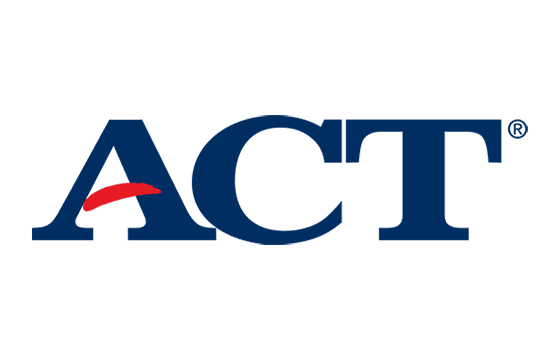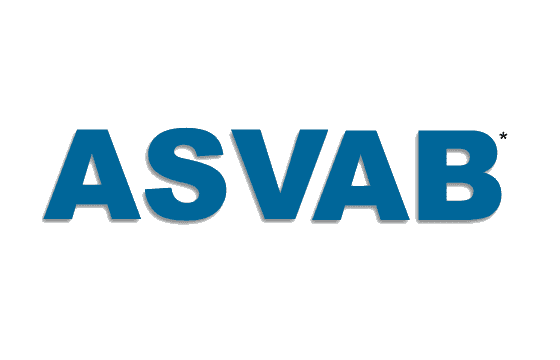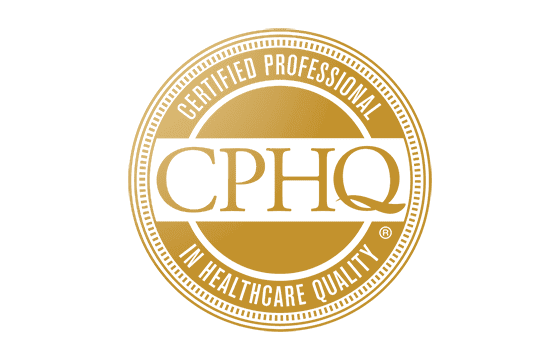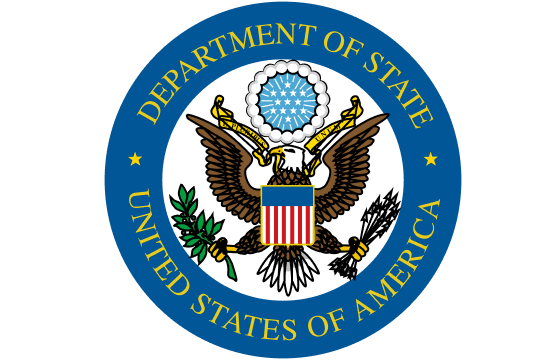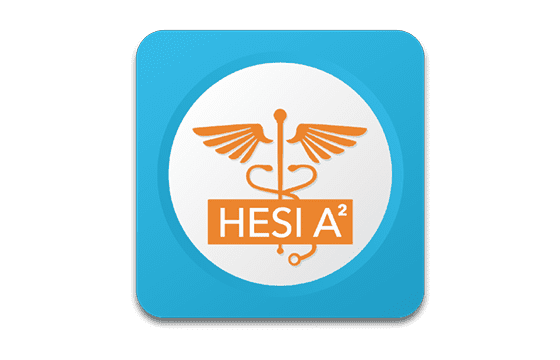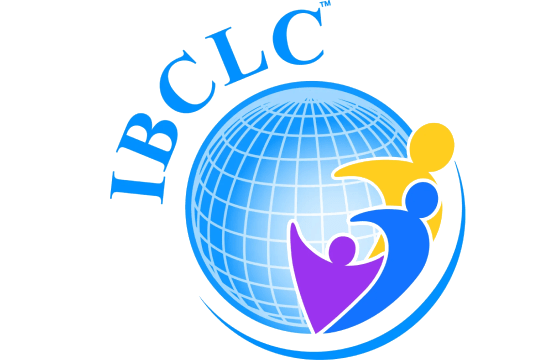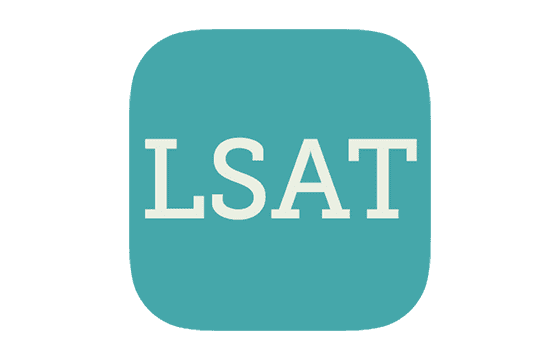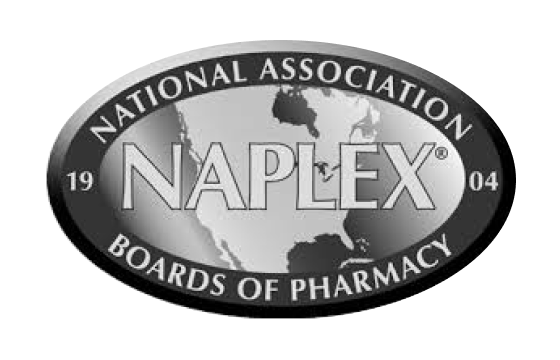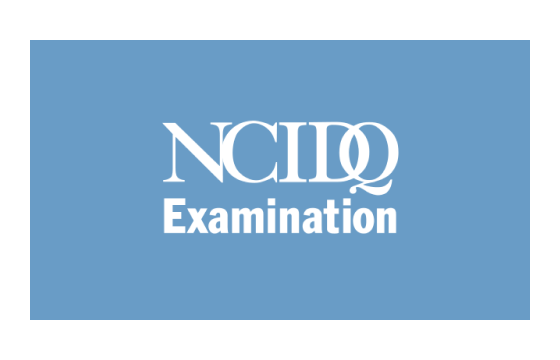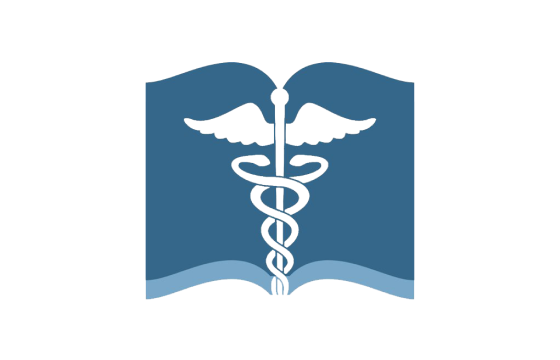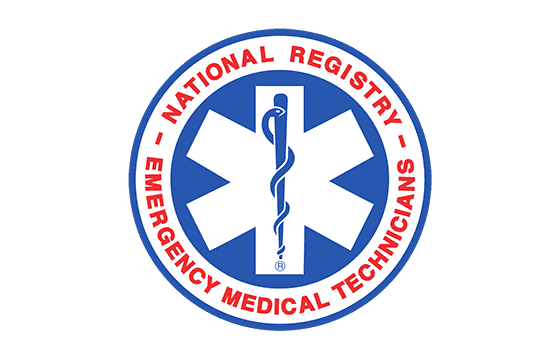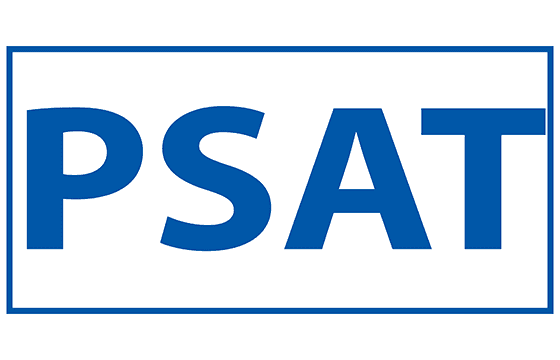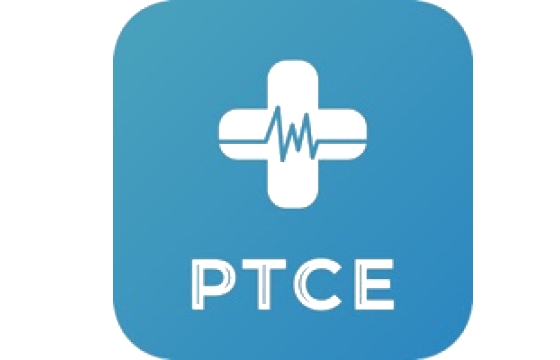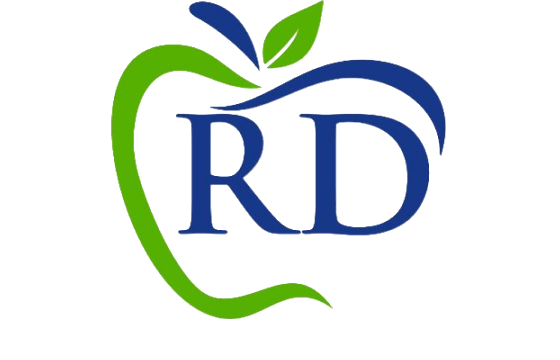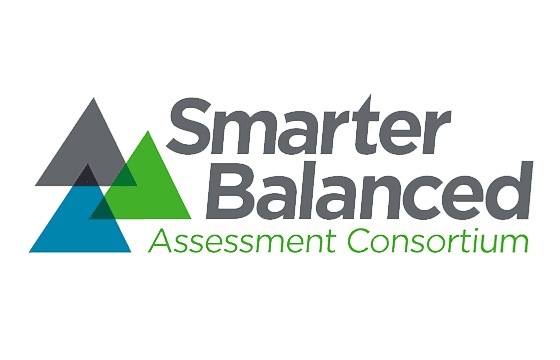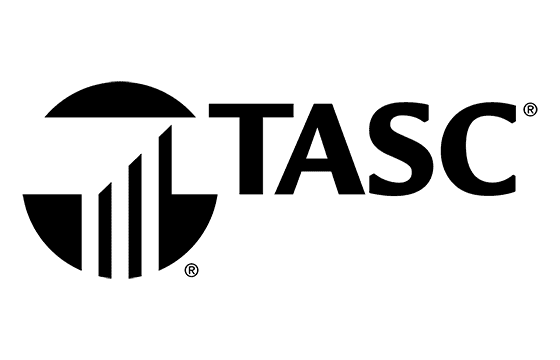Pass Your Test Prep FIRST AID Test Easy!
Test Prep FIRST AID Test Questions & Answers, Accurate & Verified By IT Experts
Instant Download, Free Fast Updates, 99.6% Pass Rate
Test Prep FIRST AID Practice Test Questions, Exam Dumps
Test Prep FIRST AID (First Aid Practice Tests) exam dumps vce, practice test questions, study guide & video training course to study and pass quickly and easily. Test Prep FIRST AID First Aid Practice Tests exam dumps & practice test questions and answers. You need avanset vce exam simulator in order to study the Test Prep FIRST AID certification exam dumps & Test Prep FIRST AID practice test questions in vce format.
Kickstart Your First Aid Test Prep Skills: Certification Tips for New Learners
First aid is more than a set of skills; it is an essential competence that can turn ordinary individuals into lifesavers in moments of urgency. The ability to administer immediate care in emergencies can make a critical difference between survival and fatality. While professional medical help is always the ultimate recourse, first aid provides an invaluable bridge that stabilizes patients and prevents minor injuries from escalating into severe conditions. The code FIRST AID encompasses a spectrum of knowledge, ranging from basic wound care to advanced cardiopulmonary resuscitation techniques, and is recognized worldwide as a standard for emergency readiness.
Getting certified in first aid is not merely about acquiring a credential; it reflects a commitment to preparedness and responsibility toward others. The programs designed for first aid certification are typically structured to teach not only the mechanics of care but also the rationale behind them. Trainees learn to assess situations critically, identify potential hazards, and prioritize actions effectively. This analytical approach ensures that responders act in a manner that is both efficient and safe. The essence of first aid training is to foster confidence and competence so that individuals are prepared to handle an array of emergencies without hesitation.
Understanding First Aid Certification and Its Importance
First aid training is commonly offered by accredited institutions such as hospitals, community centers, and fire departments. However, in the digital age, online programs have emerged as viable alternatives for those with limited access to physical classes. These courses provide theoretical knowledge, sometimes supplemented by video demonstrations and interactive simulations. Although online courses are convenient, they often lack hands-on practice, which is vital for mastering skills like chest compressions or using an automated external defibrillator. Therefore, many training experts recommend combining online learning with in-person sessions to achieve comprehensive competency.
The curriculum of a typical first aid course is broad and covers a variety of medical emergencies. Participants learn to respond to injuries such as cuts, burns, fractures, and sprains, as well as acute medical events including heart attacks, strokes, allergic reactions, and seizures. Understanding the signs and symptoms of these conditions is crucial because timely recognition often dictates the success of intervention. For instance, early detection of anaphylaxis can lead to immediate administration of epinephrine, potentially preventing life-threatening complications. First aid certification ensures that responders are well-versed in these scenarios and equipped with the skills to act promptly.
A critical aspect of first aid is learning to maintain composure under pressure. Emergencies are often chaotic, with emotions running high and circumstances rapidly evolving. Training emphasizes not only procedural knowledge but also the psychological readiness required to remain calm and make decisions that are precise and timely. Stress management techniques, clear communication, and situational awareness are integrated into the learning process to prepare certified responders for real-life incidents. By cultivating these qualities, first aid certification transcends technical skill and develops a mindset oriented toward effective crisis management.
Cost is often a consideration for those pursuing first aid certification. The investment varies depending on the depth of training and whether the course is conducted online or in person. Standard in-person classes usually range between one hundred to two hundred dollars, including instructional materials and practical sessions. Online courses can be less expensive, though the absence of hands-on components may necessitate supplementary training. It is essential to evaluate the value of each program in terms of practical experience and certification recognition rather than focusing solely on price. Employers often look for certified individuals who can demonstrate real-world competence, not just theoretical knowledge.
Certification is typically achieved through a combination of coursework and assessments. Trainees must complete both written evaluations and practical demonstrations of their skills. The practical assessment may include performing CPR on mannequins, bandaging wounds, controlling bleeding, or executing the Heimlich maneuver. Passing these evaluations signifies that the individual possesses not only knowledge but also the ability to execute interventions effectively. Maintaining certification often requires periodic recertification or refresher courses, as first aid techniques evolve with new medical research and guidelines. This continuous learning ensures that certified responders remain up-to-date and capable of providing optimal care.
An often overlooked component of first aid training is the emphasis on preventive measures. Certified responders are encouraged to educate themselves and others on reducing the likelihood of injuries and illnesses. This includes promoting safe practices at home, in workplaces, and during recreational activities. Awareness of environmental hazards, ergonomic considerations, and hygiene practices can significantly lower the risk of accidents. By integrating prevention into the skillset, first aid certification fosters a proactive approach that complements reactive emergency care.
The psychological impact of being a first responder should not be underestimated. Individuals who are trained in first aid often report heightened confidence and a sense of empowerment. They feel capable of influencing outcomes in critical situations and providing reassurance to those in distress. This confidence is particularly valuable in professional settings such as schools, workplaces, and community programs, where emergencies may arise unexpectedly. Knowing that one possesses the code FIRST AID skills cultivates resilience and reduces the sense of helplessness that often accompanies crises.
First aid certification also contributes to community safety. In many areas, certified individuals form an informal network of first responders who can act before professional help arrives. This network is especially crucial in remote locations or during mass casualty events where immediate medical resources may be limited. By equipping more people with first aid knowledge, communities create a collective safety net, increasing the likelihood that those in need receive prompt and competent care. The ripple effect of these skills extends beyond individual emergencies, strengthening societal preparedness as a whole.
Another dimension of first aid certification is its applicability across various professional domains. Healthcare professionals, teachers, coaches, lifeguards, construction workers, and childcare providers are just a few of the groups for whom first aid is not only advantageous but often mandatory. Certification ensures compliance with occupational safety standards and legal requirements while enhancing the ability to respond effectively. For instance, in educational settings, teachers trained in first aid can respond to playground injuries or sudden health crises, minimizing downtime and preventing complications. Similarly, in industrial environments, certified workers can manage accidents involving machinery or hazardous materials until emergency services arrive.
Mastering first aid requires repeated practice and experiential learning. Skills such as performing CPR, controlling hemorrhages, or using an AED become more intuitive with regular reinforcement. Practical drills, scenario-based exercises, and peer-to-peer training sessions help solidify these skills. This repetition ensures that in the heat of the moment, responders do not falter due to hesitation or uncertainty. First aid certification programs often integrate these repetitive exercises into their schedules to foster muscle memory and cognitive readiness.
First aid certification embodies a philosophy of empathy and altruism. It is an acknowledgment that emergencies are unpredictable and that preparedness is a moral responsibility. Beyond technical skill, certification fosters a culture of care and vigilance, where individuals are motivated to act for the welfare of others. This ethical dimension enhances the value of first aid training, making it a life skill that transcends occupational boundaries and becomes a hallmark of responsible citizenship.
First aid certification is far more than a credential. It is a structured program that equips individuals with the knowledge, skills, and confidence to respond effectively in emergencies. The training emphasizes assessment, intervention, prevention, and psychological readiness, preparing participants to act decisively under pressure. The code FIRST AID represents a commitment to readiness, competence, and ethical responsibility, benefiting individuals, workplaces, and communities alike. Achieving certification is an investment in personal and public safety, transforming ordinary citizens into empowered responders capable of making a profound difference in critical moments.
The Core Principles and Techniques of First Aid
First aid is not merely an assortment of medical actions; it is a disciplined framework of immediate care that blends knowledge, practical skill, and critical judgment. The essence of first aid lies in understanding that every second matters when a person is injured or ill. Through structured training and certification, individuals learn how to assess emergencies, intervene safely, and provide temporary care until professional medical personnel arrive. The code FIRST AID encompasses a variety of essential principles that form the foundation of these interventions.
At the heart of first aid is the concept of assessment. A certified responder must quickly evaluate the scene to determine the nature and severity of the emergency. This includes identifying potential hazards, assessing the condition of the victim, and determining the most appropriate response. Scene assessment is a critical skill because rushing into a situation without consideration of safety can endanger both the responder and the injured party. For instance, approaching a road accident without observing traffic patterns or potential fuel leaks could result in secondary injuries. The training provided in first aid certification equips learners to perform these evaluations instinctively.
Once the scene is evaluated, the next principle involves prioritization of care. First aid teaches responders to address the most life-threatening conditions first. This approach, often summarized by the “ABCs” – airway, breathing, and circulation – ensures that vital functions are supported before attending to less critical injuries. For example, if a person is unconscious and not breathing, immediate intervention with CPR takes precedence over treating a minor cut. Mastery of these principles requires both theoretical understanding and repeated practical exercises, which are central components of first aid certification courses.
Another fundamental aspect is wound management and bleeding control. Uncontrolled bleeding can rapidly lead to shock and can be fatal if not addressed promptly. First aid training includes techniques such as applying direct pressure, using bandages effectively, and understanding when to employ tourniquets. While these interventions may seem simple, their proper execution requires precision and confidence. Certification programs emphasize hands-on practice to ensure that responders can apply these skills efficiently in high-stress scenarios.
Cardiopulmonary resuscitation (CPR) is one of the most recognized components of first aid. It is an indispensable technique for restoring circulation and breathing in individuals experiencing cardiac arrest. Learning CPR involves mastering chest compressions, timing, depth, and rhythm to maximize effectiveness. Courses also cover the use of automated external defibrillators (AEDs), which can significantly increase survival rates in cardiac emergencies. First aid certification ensures that learners are competent in performing CPR and using AEDs, understanding the physiological principles that underpin these interventions, and recognizing the urgency of their application.
First aid also addresses a spectrum of medical emergencies beyond trauma. This includes managing sudden illnesses such as strokes, heart attacks, seizures, asthma attacks, and hypoglycemia. Each condition presents unique challenges that require prompt recognition and tailored responses. For instance, identifying the early signs of a stroke—such as facial drooping, arm weakness, and speech difficulty—enables the responder to seek immediate medical attention while providing supportive care. First aid certification instills the knowledge to detect these critical symptoms and implement appropriate interventions, bridging the gap until professional care is available.
The psychological component of first aid is equally vital. Emergencies often induce panic, confusion, and heightened stress in both the victim and the responder. Training emphasizes techniques to maintain calm, communicate clearly, and provide reassurance. This composure allows for more accurate decision-making and enhances the victim’s sense of security. Furthermore, psychological readiness is reinforced through scenario-based exercises that simulate real-life emergencies. Participants practice maintaining focus and making quick judgments, fostering resilience that is essential for effective first aid response.
Airway management is another pivotal technique covered in first aid certification. Ensuring that the victim’s airway remains open is crucial in preventing suffocation and maintaining oxygenation. Basic maneuvers, such as the head-tilt-chin-lift or the jaw-thrust, are taught to create a clear airway without causing additional injury. In cases of choking, the Heimlich maneuver or abdominal thrusts are employed to dislodge obstructions. Mastery of these techniques requires repetition and confidence, which is why certification programs dedicate substantial time to practical drills.
Burns and thermal injuries are also addressed extensively. First aid training equips responders with methods to cool burns, prevent infection, and minimize tissue damage. Knowledge of different types of burns—such as chemical, electrical, or scald injuries—is critical because each requires a specific approach. For instance, chemical burns demand immediate rinsing with running water, whereas electrical burns necessitate ensuring that the source of electricity is neutralized before intervention. Proper first aid in these scenarios can reduce complications and improve recovery outcomes, highlighting the importance of formal training and certification.
Fractures, sprains, and musculoskeletal injuries constitute another focus area. Responders learn to immobilize limbs, apply splints, and manage pain without exacerbating injuries. The code FIRST AID emphasizes the importance of stabilizing affected areas, monitoring circulation, and avoiding unnecessary movement. Practical exercises in certification courses allow learners to handle various types of fractures, from simple wrist breaks to complex long-bone injuries, fostering confidence in their ability to act decisively.
Environmental emergencies such as heatstroke, hypothermia, and dehydration are increasingly relevant in first aid education. Responders are trained to recognize early warning signs, provide rapid intervention, and prevent deterioration. For instance, understanding the stages of heat-related illness enables timely cooling measures, hydration, and monitoring of vital signs. Similarly, hypothermia management involves gradual warming, insulation, and careful observation to prevent cardiac complications. First aid certification ensures that participants are adept at managing environmental stressors that can be life-threatening if left untreated.
Allergic reactions and anaphylaxis are also critical areas within first aid training. Participants learn to identify triggers, administer epinephrine via auto-injectors, and monitor patients for secondary reactions. This knowledge is especially pertinent for individuals working in schools, childcare, or food service, where exposure to allergens is common. Proper intervention in anaphylaxis can be lifesaving, demonstrating the practical significance of certification in real-world settings.
Choking emergencies require specific attention in first aid certification. Responders are trained to differentiate between partial and complete airway obstruction and execute appropriate maneuvers for adults, children, and infants. The ability to act swiftly in these scenarios is crucial, as a delayed response can result in hypoxia and irreversible damage. Repeated practice in certification courses helps develop the instinctual response necessary to act under pressure, reinforcing the value of hands-on learning.
First aid certification programs also incorporate education on infection control and hygiene practices. Responders learn to protect themselves and victims from cross-contamination, manage exposure to bodily fluids, and apply proper sanitization techniques. This knowledge is vital for minimizing secondary complications and ensuring that interventions are safe for all parties involved. Emphasis on hygiene aligns with broader public health principles and underscores the comprehensive nature of first aid training.
A unique aspect of first aid certification is the emphasis on situational adaptability. Emergencies do not follow predictable patterns, and responders must tailor interventions based on available resources, environmental constraints, and the condition of the patient. Courses encourage improvisation using everyday materials, such as creating makeshift splints or leveraging clothing to control bleeding. This adaptability ensures that certified individuals can provide effective care even in resource-limited or unconventional settings.
Communication skills are interwoven into all aspects of first aid training. Certified responders learn to convey information clearly to emergency services, articulate the nature of the injury, and provide instructions to bystanders assisting at the scene. Efficient communication accelerates the arrival of professional help and enhances the coordination of efforts on-site. Certification courses often simulate emergency calls and role-playing scenarios to develop these skills, reinforcing the practical application of knowledge under realistic conditions.
The psychological well-being of the responder is another consideration emphasized during certification. First aid courses address the potential emotional impact of witnessing traumatic events and provide strategies for coping with stress and burnout. Peer support, debriefing, and self-care practices are encouraged to maintain the responder’s mental resilience. Recognizing and managing the psychological demands of first aid ensures that certified individuals remain capable of performing effectively while protecting their own health.
Preventive first aid knowledge extends beyond emergency response into everyday life. Certified individuals are often more attuned to safety hazards, ergonomics, and risk-reducing behaviors. This preventive mindset enhances personal safety and contributes to community well-being. For example, a certified responder may identify unsafe practices in a workplace or recreational setting and intervene before an accident occurs. The code FIRST AID, therefore, encompasses both reactive emergency care and proactive prevention, reflecting a holistic approach to health and safety.
First aid certification fosters a culture of responsibility and ethical commitment. Participants learn the importance of acting within their scope, documenting incidents accurately, and maintaining confidentiality when appropriate. Ethical training ensures that responders respect the rights and dignity of those they assist while providing competent care. This ethical framework complements the practical skills, reinforcing the broader significance of first aid in society.
The core principles and techniques of first aid encompass assessment, prioritization, wound management, CPR, airway care, environmental response, infection control, situational adaptability, communication, and psychological preparedness. Certification instills competence, confidence, and ethical awareness, transforming individuals into capable and responsible responders. The code FIRST AID is not merely a set of procedures; it represents a philosophy of readiness, empathy, and proactive engagement in preserving life and well-being. By mastering these skills, certified individuals enhance both personal capability and collective safety within their communities.
First Aid in Real-Life Emergencies and Everyday Scenarios
The value of first aid certification becomes most evident when emergencies occur in real life, often unexpectedly and in settings far removed from professional medical help. The code FIRST AID equips individuals with the knowledge, skills, and confidence to respond effectively in situations that range from minor injuries to life-threatening crises. While theory is essential, the ability to translate training into decisive action distinguishes certified responders from unprepared bystanders.
Accidents in the home are among the most common scenarios where first aid proves indispensable. Falls, cuts, burns, and choking incidents occur frequently, especially in households with children or elderly family members. A certified responder can quickly evaluate the severity of a cut, cleanse and dress it properly, and monitor for signs of infection. Burns can be cooled appropriately, and choking victims can be assisted with the Heimlich maneuver. Without first aid knowledge, even minor injuries can escalate into serious complications due to delayed or improper intervention. Certification ensures that individuals can provide immediate care while awaiting further medical evaluation if necessary.
Road accidents are another domain where first aid certification is critical. On highways or busy streets, immediate professional help may take several minutes to arrive. In such cases, a responder trained in first aid can assess the situation, stabilize victims, control bleeding, and prevent shock. Understanding the principles of cervical spine protection is essential when dealing with potential head or neck injuries, as improper movement can exacerbate trauma. First aid certification emphasizes the importance of both speed and safety, training individuals to act decisively without causing additional harm.
Workplace emergencies further highlight the relevance of first aid. Industries such as construction, manufacturing, and chemical processing present inherent risks of injuries,, including fractures, burns, chemical exposure, and electrocution. Certified personnel are often the first line of defense in these environments, capable of administering appropriate interventions immediately. Companies increasingly recognize the value of first aid certification, not only to comply with safety regulations but also to reduce the impact of accidents on productivity and morale. The code FIRST AID, therefore, becomes a practical asset that enhances workplace safety and supports organizational resilience.
First aid also plays a vital role in public spaces such as schools, shopping centers, sports arenas, and community events. In these environments, the presence of certified responders can prevent tragedies. Teachers, coaches, lifeguards, and security personnel who possess first aid certification are prepared to handle incidents ranging from fainting and asthma attacks to severe allergic reactions and sudden cardiac arrest. By applying their training promptly, they stabilize individuals until emergency services arrive, often making the difference between life and death.
Outdoor activities and recreational settings present unique challenges that necessitate first aid skills. Hikers, campers, and athletes are exposed to environmental hazards such as insect bites, snake bites, heatstroke, dehydration, hypothermia, and fractures. First aid certification provides practical knowledge on how to treat these injuries, improvise solutions when standard equipment is unavailable, and safely transport victims to medical facilities. This knowledge not only reduces the severity of injuries but also increases the confidence of both the responder and those participating in outdoor activities.
First aid is essential for managing medical conditions that can deteriorate rapidly without timely intervention. Individuals with diabetes, epilepsy, asthma, or heart conditions can experience emergencies where minutes are critical. Certified responders are trained to recognize warning signs, administer emergency treatment, and monitor vital functions. For example, in cases of hypoglycemia, a responder can provide glucose promptly, potentially preventing unconsciousness or seizure. Similarly, asthma attacks require rapid administration of inhalers and monitoring for respiratory distress. First aid certification ensures that individuals can act competently and calmly in these medical scenarios.
Transport-related emergencies, such as incidents on buses, trains, or airplanes, highlight another context where first aid is invaluable. Delays in professional medical care during transit can be mitigated by passengers or staff with first aid training. Knowledge of CPR, bleeding control, airway management, and basic life support can stabilize patients until advanced care is available. Certification programs often incorporate these scenarios into training exercises, allowing participants to simulate interventions in confined or challenging spaces, fostering adaptability and confidence.
First aid is not limited to immediate physical care; it also encompasses monitoring and observation. Certified responders are trained to recognize changes in a patient’s condition, document interventions, and provide accurate information to emergency services. This ongoing assessment is crucial in preventing deterioration and ensuring continuity of care. For instance, after treating a burn or wound, a responder continues to monitor for signs of infection, shock, or allergic reaction, providing both reassurance and practical assistance. This vigilant approach reinforces the role of first aid as a bridge to professional medical care.
In emergencies involving children, first aid certification is particularly significant. Children are more susceptible to accidents and often respond differently to injuries or illnesses compared to adults. Training includes pediatric-specific techniques, such as modified CPR, choking interventions, and proper handling of fractures or burns. By understanding these nuances, certified responders can provide effective care that considers both physical and psychological needs. The confidence gained through certification also enables adults to maintain composure in highly stressful situations, improving outcomes for young patients.
Sports and physical activities are another area where first aid is indispensable. Athletes are prone to sprains, fractures, concussions, and heat-related illnesses. First aid training ensures that coaches, trainers, and players themselves can address injuries immediately, reducing the risk of long-term damage. For example, prompt recognition and management of concussions can prevent further brain injury, while appropriate treatment of sprains and fractures supports faster recovery. The code FIRST AID encompasses protocols for both emergency intervention and ongoing care, emphasizing the importance of timely action.
First aid also addresses the management of psychological distress during emergencies. Panic, shock, and anxiety can complicate medical situations, affecting both the victim and bystanders. Certification programs include training in psychological first aid, which focuses on providing reassurance, calming agitation, and promoting cooperation. By integrating emotional support with medical intervention, responders create a safer and more controlled environment, which is critical in managing complex emergencies.
Community preparedness is strengthened through first aid certification. When more individuals are trained, communities become more resilient in the face of disasters, mass casualty incidents, or localized emergencies. Certified responders form informal networks that provide immediate support before professional help arrives. In rural or remote areas, where medical services may be distant, this network is particularly vital. First aid training encourages civic responsibility, fostering a culture where individuals are empowered to contribute to collective safety.
First aid also extends to handling environmental emergencies such as floods, earthquakes, and fires. Natural disasters often create situations where professional medical assistance is delayed or overwhelmed. Certified responders are equipped to perform triage, manage injuries, provide basic life support, and support evacuation efforts. Knowledge of emergency protocols, improvisation with available resources, and coordination with relief organizations enhances the effectiveness of response efforts. This demonstrates the versatility and critical importance of first aid certification in both everyday and extraordinary circumstances.
Accidents involving animals, including bites and stings, are another scenario where first aid skills are vital. First aid training covers wound cleaning, infection prevention, and recognition of severe allergic reactions. In rural or outdoor settings, where professional care may not be immediately accessible, these skills can prevent minor injuries from escalating and reduce the risk of serious infections such as rabies. Understanding the principles of first aid in animal-related incidents ensures a timely and safe response, illustrating the breadth of situations addressed by certification programs.
The integration of technology into first aid is also noteworthy. Mobile applications, online resources, and virtual simulations enhance learning and provide real-time guidance during emergencies. While these tools supplement knowledge, certification ensures that responders can perform essential interventions independently, without reliance on digital aids. The combination of traditional training and technological resources strengthens the responder’s capacity to act effectively in diverse situations.
The ethical and legal dimensions of first aid are integral to real-life application. Certified responders are trained to act within their scope, obtain consent when possible, and document interventions accurately. Understanding these responsibilities protects both the responder and the victim while fostering trust and accountability. Legal frameworks in many countries recognize the role of certified individuals, providing protectionfor those who act in good faith during emergencies. This ethical grounding reinforces the societal value of first aid certification, making it not only a practical skill but also a moral responsibility.
First aid certification prepares individuals to respond effectively across a wide array of real-life emergencies. From home accidents to natural disasters, from pediatric incidents to sports injuries, the code FIRST AID equips responders with practical skills, psychological readiness, and ethical awareness. Certification ensures that individuals can act decisively, provide temporary care, and bridge the gap until professional medical assistance arrives. By translating training into action, certified responders play a critical role in safeguarding life, promoting community safety, and enhancing societal resilience.
Advanced Skills and Considerations in First Aid Certification
First aid is not simply about knowing a few techniques; it represents a comprehensive framework that combines practical skills, critical thinking, and situational awareness. The code FIRST AID embodies these principles, ensuring that certified individuals are prepared to handle emergencies with precision and confidence. While basic interventions like wound care and CPR are fundamental, advanced skills and nuanced understanding differentiate a competent responder from someone with only superficial knowledge.
A core aspect of advanced first aid is understanding the physiological responses to trauma and illness. Certified individuals learn to recognize early signs of shock, respiratory distress, and cardiovascular compromise. This knowledge allows responders to anticipate deterioration and intervene preemptively, potentially saving lives. For example, shock can manifest through pale skin, rapid pulse, or shallow breathing, and timely administration of fluid support and positioning techniques can stabilize a patient until professional help arrives. First aid certification ensures that these observations and interventions become second nature through repeated training and practice.
Advanced airway management is another critical component of first aid certification. While basic techniques like the head-tilt-chin-lift are essential, situations involving unconscious or severely injured patients may require more sophisticated approaches. Certified responders learn to clear obstructions, use airway adjuncts when available, and monitor breathing continuously. These skills are particularly relevant in multi-casualty incidents, where timely intervention for multiple patients can be challenging. Mastery of advanced airway management reinforces the code FIRST AID’s emphasis on preparedness, adaptability, and competence.
Trauma assessment in complex emergencies extends beyond visible injuries. First aid training emphasizes systematic evaluation, including checking for internal bleeding, fractures, and head injuries. Recognizing subtle indicators, such as changes in consciousness or irregular pulse, can prompt life-saving decisions. Certification programs integrate scenario-based simulations that replicate real-life trauma situations, encouraging responders to practice rapid, accurate assessment. This method ensures that individuals are prepared for unexpected complications and can prioritize interventions effectively.
First aid also includes the management of environmental and chemical emergencies. Exposure to hazardous substances, extreme temperatures, or electrical currents requires specialized knowledge. Certified responders are trained to identify the type of exposure, implement appropriate safety measures, and initiate immediate care. For instance, chemical burns require thorough irrigation, while hypothermia necessitates controlled rewarming and monitoring of vital signs. Understanding these nuances enhances a responder’s ability to prevent further injury and provide effective temporary care in varied situations.
Pediatric and geriatric first aid is a specialized area within certification programs. Children and elderly patients have physiological differences that affect treatment approaches. Pediatric CPR, for example, uses different compression depths and ratios compared to adults. Similarly, the elderly may present atypical symptoms or have pre-existing conditions that complicate intervention. Certification ensures that responders understand these distinctions, enabling tailored care that maximizes safety and efficacy. By addressing these age-specific considerations, first aid programs broaden the applicability of skills across diverse populations.
Another advanced area covered in first aid certification is the management of medical emergencies involving chronic illnesses. Individuals with diabetes, cardiovascular disease, or respiratory conditions can experience crises such as hypoglycemia, heart attacks, or asthma exacerbations. Certified responders learn to recognize warning signs, administer appropriate interventions, and monitor vital signs until professional care is available. This proactive approach reduces complications and demonstrates the practical value of advanced training in everyday life.
Hemorrhage control remains a cornerstone of advanced first aid. While direct pressure and bandaging are fundamental, severe arterial bleeding may require tourniquet application or hemostatic dressings. Certification courses provide hands-on practice with these techniques, emphasizing safety, proper placement, and monitoring to prevent secondary injury. The ability to control significant bleeding is often the difference between survival and fatality, making it a critical skill for certified responders.
First aid also encompasses the use of emergency equipment. Automated external defibrillators, oxygen delivery systems, and first aid kits are integral to effective response. Certification ensures that individuals are proficient in operating these tools safely and efficiently. Training includes scenarios where responders must adapt to equipment limitations, reinforcing the importance of flexibility and problem-solving in emergencies. The integration of equipment knowledge within first aid certification enhances both confidence and competence.
Psychological first aid is a crucial yet often overlooked aspect of certification. Responders learn to manage panic, anxiety, and trauma in victims and bystanders. Techniques include providing reassurance, encouraging calm breathing, and maintaining a composed presence. These strategies not only stabilize the victim but also create an environment conducive to effective medical intervention. By combining psychological support with physical care, certified responders embody the holistic principles represented by the code FIRST AID.
Triage is another advanced skill included in first aid training, particularly relevant in mass casualty incidents. Responders are taught to quickly assess multiple patients, prioritize treatment based on severity, and allocate resources effectively. This skill requires rapid judgment, situational awareness, and the ability to make critical decisions under pressure. Scenario-based exercises within certification programs simulate complex emergencies, allowing responders to practice triage and refine decision-making strategies. The inclusion of triage in first aid training highlights the program’s commitment to comprehensive emergency preparedness.
First aid certification also emphasizes infection control and prevention. Responders learn to use personal protective equipment, manage exposure to bodily fluids, and apply proper sanitation techniques. These measures protect both the responder and the victim, reducing the risk of secondary infections. In modern healthcare contexts, where infectious diseases are a persistent concern, this knowledge is essential. Certification instills a disciplined approach to hygiene, ensuring that interventions are safe, effective, and aligned with public health principles.
Advanced first aid also involves improvisation and resourcefulness. Emergencies do not always present ideal conditions, and responders may need to utilize available materials creatively. Training encourages the use of clothing, makeshift splints, or household items to stabilize patients. This flexibility ensures that certified individuals can provide effective care even when standard tools are unavailable, reinforcing the practical applicability of the skills learned.
Documentation and communication are integral to advanced first aid. Certified responders are trained to record interventions accurately, relay information to emergency personnel, and coordinate with bystanders effectively. Clear communication reduces confusion, ensures continuity of care, and supports legal and ethical accountability. Certification programs often incorporate role-playing and simulated communication exercises to reinforce these skills, highlighting their critical role in effective emergency response.
Legal and ethical considerations are central to advanced first aid certification. Responders learn to act within their scope, obtain consent when possible, and respect patient confidentiality. Understanding the legal protections afforded to good-faith responders and the ethical obligations to provide competent care reinforces responsible decision-making. This knowledge ensures that certified individuals act with professionalism and integrity, enhancing both public trust and personal confidence.
Refresher courses and ongoing education are vital components of maintaining first aid competency. Skills can degrade over time, and guidelines may change as medical research advances. Certification programs often require periodic recertification, ensuring that responders remain current with the latest techniques and protocols. Continuous learning reinforces muscle memory, updates knowledge, and sustains the confidence needed to act decisively in emergencies.
First aid certification fosters a culture of preparedness and civic responsibility. Certified individuals often become advocates for safety, educating others on injury prevention, risk management, and emergency response. This community-oriented mindset extends the impact of first aid beyond individual emergencies, contributing to societal resilience and well-being. By cultivating knowledge, skill, and ethical responsibility, first aid certification transforms individuals into capable and conscientious responders.
Advanced skills and considerations in first aid certification extend far beyond basic techniques. From physiological assessment and trauma management to psychological support, triage, equipment use, infection control, improvisation, and legal awareness, certification encompasses a holistic approach to emergency preparedness. The code FIRST AID represents a commitment to competence, adaptability, and ethical responsibility, equipping individuals to respond effectively in diverse and complex situations. Mastery of these advanced principles ensures that certified responders are not only capable of saving lives but also of fostering safety and resilience within their communities.
The Role of First Aid Certification in Workplace and Community Safety
First aid certification has emerged as a cornerstone of workplace safety and community preparedness. The code FIRST AID encompasses not only lifesaving techniques but also the awareness, judgment, and ethical responsibility necessary to act effectively in emergencies. In professional and communal environments alike, certified individuals serve as crucial links in a safety chain, bridging the gap between incidents and professional medical intervention. Their training ensures that immediate care can be delivered confidently, reducing the severity of injuries, preventing complications, and enhancing overall safety outcomes.
Workplaces are inherently prone to accidents, from minor incidents like slips and cuts to major emergencies such as chemical spills, electrical shocks, or severe trauma from machinery. Certified first aid responders are trained to assess these situations promptly, apply appropriate interventions, and prevent secondary harm. Understanding the specific hazards associated with a work environment is essential. For example, in construction or industrial settings, knowledge of stabilizing fractures, controlling bleeding, and managing shock can save lives. Employers increasingly recognize that investing in first aid training enhances both compliance with safety regulations and the practical well-being of employees.
The principles taught in first aid certification are applicable across a wide range of professions. Healthcare workers, teachers, coaches, childcare providers, and even administrative staff benefit from knowing how to respond to emergencies. In schools, teachers trained in first aid can respond to playground accidents, allergic reactions, and sudden illnesses, stabilizing students until emergency services arrive. In offices, employees certified in first aid can manage falls, fainting episodes, or cardiac events among colleagues, improving response times and minimizing injury severity. The presence of trained personnel fosters a culture of safety and preparedness, making emergency response a collective responsibility rather than an isolated action.
Community safety is significantly enhanced by the widespread availability of first aid certification. Residents, volunteers, and civic leaders trained in first aid can provide immediate care during public events, natural disasters, or localized emergencies. This preparedness reduces the burden on professional emergency services and improves outcomes for those affected. In rural or remote areas, where hospitals and paramedics may not be immediately accessible, certified responders form an essential safety net. Their ability to recognize symptoms, provide interventions, and monitor victims can mean the difference between recovery and severe complications.
Emergency response is not limited to physical care; it also encompasses situational management and communication. Certified first aid responders are trained to coordinate with bystanders, guide emergency services to the scene, and maintain a structured response in chaotic environments. Clear communication is vital during incidents involving multiple victims or hazards, such as fires, floods, or traffic accidents. By instructing others on how to assist without causing harm, certified individuals ensure that efforts are organized and effective. This aspect of training underscores that first aid is as much about leadership and judgment as it is about medical skills.
A critical component of workplace and community safety is prevention, and first aid certification emphasizes this principle extensively. Certified responders learn to identify potential hazards, implement preventive measures, and educate others about risk reduction. For instance, recognizing unsafe storage of chemicals, poorly maintained equipment, or blocked emergency exits can avert accidents before they occur. Similarly, public awareness campaigns led by certified individuals promote safer practices in schools, workplaces, and community centers. The code FIRST AID, therefore, represents a proactive philosophy that combines readiness with foresight, reducing the likelihood of emergencies before they arise.
In addition to reactive measures, first aid certification prepares individuals for large-scale emergencies and mass casualty events. Responders learn triage, which involves assessing multiple patients and prioritizing treatment based on the severity of injuries. This skill requires rapid decision-making, situational awareness, and the ability to act under pressure. Scenario-based training in certification programs ensures that individuals can manage multiple victims efficiently, allocate resources appropriately, and coordinate with professional services effectively. Mass casualty preparedness underscores the critical role that certified responders play in community safety and resilience.
First aid training also encompasses psychological support, an often-overlooked aspect of emergency response. Panic, fear, and confusion are common during crises, and the ability to calm victims and bystanders is vital. Certified responders are taught to provide reassurance, maintain composure, and foster cooperation. Psychological first aid reduces stress and anxiety, allowing physical interventions to be more effective. In workplaces and community settings, this dual focus on physical and emotional stabilization ensures that responders address the full spectrum of human needs during emergencies.
Environmental emergencies, including floods, earthquakes, and fires, are increasingly relevant in both workplace and community contexts. First aid certification equips individuals to act safely in these challenging situations. For example, responders learn to manage injuries caused by debris, provide temporary shelter, prevent hypothermia or heatstroke, and coordinate evacuation efforts. Certification training emphasizes both personal safety and victim care, ensuring that responders can function effectively in hazardous and unpredictable conditions. The ability to act safely in environmental emergencies demonstrates the versatility and critical importance of first aid skills.
The integration of first aid with occupational safety protocols enhances overall preparedness. Many industries have regulations requiring the presence of certified personnel, proper emergency equipment, and documented response plans. First aid certification ensures compliance with these standards while providing practical competence. For instance, a certified responder can train colleagues in basic safety measures, perform routine checks of first aid equipment, and maintain emergency logs. This proactive approach enhances both safety and organizational efficiency, highlighting the practical benefits of certification beyond immediate medical intervention.
First aid certification also extends to specialized areas, including the management of allergic reactions, chronic conditions, and pediatric or geriatric emergencies. In workplaces where employees may have pre-existing health conditions or in community settings involving children or the elderly, knowledge of these specific needs is crucial. Certified responders understand the unique physiological and medical considerations for these populations, enabling appropriate and timely interventions. This specialization reflects the depth of first aid training and its adaptability to diverse scenarios.
First aid also intersects with legal and ethical responsibilities in workplace and community settings. Certified responders are trained to act within their scope, obtain consent where possible, and document interventions accurately. Understanding the legal framework protects both the responder and the organization while ensuring accountability. Ethical considerations, such as respecting patient privacy and dignity, are integral to certification, reinforcing the principle that first aid is not merely technical skill but also a moral obligation.
The social impact of first aid certification cannot be overstated. Communities with a high prevalence of certified individuals experience faster emergency response times, fewer complications, and increased resilience. Workplace environments with certified staff enjoy higher safety standards, reduced absenteeism due to injury, and greater employee confidence. Certification fosters a culture where safety is prioritized, and responsibility is shared, transforming emergency preparedness from an individual task into a collective endeavor.
Practical exercises and simulations are essential components of certification programs, ensuring that knowledge translates into effective action. These exercises replicate real-world scenarios, such as car accidents, workplace injuries, or public emergencies. Participants practice assessing situations, providing interventions, and coordinating with others. The repetition and realism of these drills build muscle memory, reinforce decision-making skills, and instill confidence. By the end of certification, individuals are prepared to act decisively, efficiently, and safely in actual emergencies.
The psychological benefits for certified responders are also significant. Individuals trained in first aid often experience increased self-confidence, a sense of empowerment, and reduced anxiety when confronted with emergencies. This mental preparedness enhances their ability to function effectively, maintain composure, and support others. In both workplace and community contexts, the presence of trained individuals fosters a sense of security, encouraging proactive safety practices and collective vigilance.
First aid certification also emphasizes continuous learning. Guidelines and techniques evolve based on medical research and best practices, making refresher courses essential. Regular practice, updated training, and participation in drills ensure that skills remain current and effective. This commitment to ongoing education reflects the dynamic nature of first aid and reinforces the responsibility of certified individuals to maintain competence.
First aid certification is a cornerstone of workplace and community safety. Through a combination of technical skills, critical thinking, situational awareness, and ethical responsibility, certified responders enhance preparedness, prevent complications, and save lives. The code FIRST AID represents not only the practical ability to provide care but also a commitment to proactive safety, psychological support, and continuous learning. By integrating first aid into workplaces and communities, individuals contribute to a culture of resilience, empowerment, and shared responsibility, ensuring that safety and well-being remain a priority in every environment.
First Aid Certification and Emergency Preparedness: Building Lifesaving Confidence
First aid certification extends beyond learning medical techniques; it cultivates a mindset of readiness and resilience that is invaluable in emergencies. The code FIRST AID embodies the principles, skills, and ethical responsibilities required to act effectively, ensuring that certified individuals are not only capable of providing immediate care but also confident in decision-making and situational judgment. Emergency preparedness, supported by formal training, transforms uncertainty into actionable competence, reducing risk and improving outcomes in critical situations.
Preparedness begins with awareness. Certified responders are trained to identify hazards in their surroundings and anticipate potential emergencies. This proactive approach includes recognizing environmental dangers, such as slippery surfaces, electrical hazards, or unsafe equipment, and understanding the vulnerabilities of individuals in specific settings. Awareness is particularly crucial in high-risk environments like industrial sites, healthcare facilities, and outdoor recreational areas. First aid certification ensures that responders are vigilant and able to anticipate problems before they escalate into emergencies, turning knowledge into preventive action.
Situational assessment is a foundational skill in emergency response. When confronted with an accident or medical crisis, responders must rapidly evaluate the scene, identify immediate threats, and determine the most critical interventions. Certification courses teach systematic evaluation techniques, such as checking for hazards, assessing victim consciousness, and monitoring vital signs. This structured approach allows responders to prioritize interventions efficiently, preventing secondary injuries and ensuring that life-threatening conditions are addressed first. In essence, situational assessment transforms panic into strategic action, aligning with the core principles of FIRST AID.
The ability to act decisively under pressure is a hallmark of certified responders. Training programs incorporate high-stress simulations and scenario-based exercises, which condition participants to perform effectively even in chaotic environments. Whether facing a cardiac arrest, severe trauma, or a multi-victim incident, individuals trained in first aid develop the mental clarity and confidence to initiate appropriate interventions. These exercises enhance reflexive decision-making, ensuring that knowledge is applied accurately and swiftly when seconds matter most. The experiential learning provided in certification programs is invaluable, bridging the gap between theoretical understanding and real-world application.
First aid certification emphasizes both immediate intervention and ongoing monitoring. Responders learn to stabilize patients, administer care, and observe changes in condition until professional medical assistance arrives. Continuous monitoring is crucial in emergencies such as shock, respiratory distress, or severe bleeding, where patient status can deteriorate rapidly. Certification equips individuals with the skills to recognize subtle changes, respond promptly, and maintain vigilance. This ability to manage ongoing care reinforces the lifesaving impact of FIRST AID and underscores the importance of sustained attention in critical situations.
One of the most recognized skills in emergency preparedness is cardiopulmonary resuscitation (CPR). Certification ensures that responders can perform chest compressions, maintain proper timing and depth, and use automated external defibrillators (AEDs) effectively. Beyond technical proficiency, training instills confidence to act decisively, even in high-stress scenarios where hesitation could be fatal. CPR exemplifies the combination of skill, situational awareness, and confidence that is central to emergency preparedness and highlights the value of formal certification.
Bleeding control and wound management are equally critical in emergency response. Certified responders are trained to apply direct pressure, use bandages correctly, and employ tourniquets or hemostatic agents when necessary. Understanding the severity of different injuries and selecting the appropriate technique prevents complications and enhances survival rates. Certification courses reinforce hands-on practice, ensuring that responders can execute interventions instinctively and efficiently. These skills exemplify the practical, tangible benefits of FIRST AID training in real-life emergencies.
First aid training also includes managing airway and breathing complications. Techniques such as the head-tilt-chin-lift, jaw-thrust, and suctioning of obstructions are taught alongside the recognition of partial or complete airway blockages. Responders also learn to address choking incidents in adults, children, and infants using appropriate maneuvers. This knowledge, combined with repeated practice, ensures that certified individuals can maintain airway patency and prevent hypoxia, which is crucial in preserving life during emergencies.
Environmental and disaster preparedness is another significant aspect of first aid certification. Natural disasters, including floods, earthquakes, and severe storms, can create situations where immediate professional medical assistance is delayed. Certified responders are trained to assess injuries, manage multiple victims, stabilize patients, and coordinate evacuation efforts safely. Understanding environmental hazards and adapting first aid techniques to challenging conditions exemplifies the versatility of FIRST AID training and its relevance across a wide spectrum of emergencies.
Psychological preparedness is as important as technical skills in emergencies. Responders are taught to remain calm, provide reassurance, and manage panic or anxiety among victims and bystanders. Psychological first aid promotes cooperation, reduces stress, and improves the effectiveness of medical interventions. Certification emphasizes this mental readiness, ensuring that responders are equipped to handle the emotional intensity of emergencies while maintaining clear judgment and decisive action.
First aid certification also encompasses pediatric and geriatric considerations, reflecting the physiological differences and vulnerabilities of these populations. Children may require modified CPR or choking interventions, while older adults may have pre-existing conditions that complicate care. Certified responders learn to tailor their techniques to accommodate these differences, ensuring safe and effective interventions. This adaptability enhances the relevance and applicability of FIRST AID across diverse age groups and contexts.
Allergic reactions, anaphylaxis, and other medical emergencies are integral to preparedness training. Responders are taught to recognize symptoms, administer epinephrine, monitor vital signs, and ensure continuous care until emergency services arrive. These skills demonstrate the intersection of practical knowledge, situational awareness, and rapid decision-making. In real-world scenarios, timely intervention for allergic reactions can prevent fatal outcomes, underscoring the lifesaving potential of FIRST AID certification.
First aid training also includes the management of fractures, burns, and musculoskeletal injuries. Certified responders learn to immobilize injured limbs, provide pain management, and prevent further damage. Techniques such as splinting, cooling burns, and monitoring circulation are emphasized through hands-on exercises. Mastery of these skills ensures that responders can stabilize patients effectively, reducing the risk of complications and facilitating recovery.
Communication and coordination are vital elements of emergency preparedness. Certified responders are trained to communicate clearly with emergency services, bystanders, and other responders. Accurate reporting of patient condition, injury type, and interventions performed ensures that professional medical teams can provide seamless care upon arrival. Certification programs often incorporate role-playing and simulation exercises to refine these communication skills, reinforcing the importance of clarity and precision during high-pressure situations.
Legal and ethical knowledge is an essential component of certification. Responders are trained to act within their scope, obtain consent when possible, document interventions accurately, and respect patient privacy. Understanding legal protections and ethical obligations ensures that responders provide competent care without exposure to liability, enhancing both confidence and professional integrity. The integration of ethical principles into FIRST AID training demonstrates the comprehensive nature of emergency preparedness education.
Emergency kits and equipment familiarity are emphasized in first aid certification. Responders learn to utilize supplies effectively, improvise when necessary, and maintain readiness of available tools. Knowledge of AEDs, bandages, splints, and personal protective equipment ensures that interventions are both efficient and safe. This technical familiarity complements theoretical training, preparing responders for diverse emergency scenarios.
First aid certification instills a sense of responsibility and empowerment. Individuals gain confidence in their ability to make a difference, fostering a proactive mindset toward safety in workplaces, homes, and communities. This empowerment encourages ongoing vigilance, risk assessment, and participation in preventive measures, contributing to a culture of preparedness that extends beyond individual emergencies.
Regular practice and recertification reinforce these skills, ensuring that responders maintain proficiency and adapt to evolving best practices. Updates in medical protocols, changes in equipment usage, and advances in emergency care necessitate continuous learning. Certification programs integrate periodic refreshers to maintain competence, enhance confidence, and ensure readiness in real-life situations.
First aid certification cultivates comprehensive emergency preparedness, combining technical proficiency, situational awareness, psychological resilience, and ethical responsibility. The code FIRST AID embodies this holistic approach, preparing individuals to act decisively, stabilize patients, manage multiple emergencies, and coordinate effectively with professional services. By building confidence, competence, and resilience, certification transforms individuals into capable responders, enhancing safety and saving lives across workplaces, homes, and communities. Emergency preparedness is not just a skill set; it is a mindset rooted in readiness, foresight, and the commitment to act when every second counts.
First Aid Certification and the Management of Medical Emergencies
First aid certification is a vital component of personal and public safety, equipping individuals with the skills to manage medical emergencies effectively. The code FIRST AID reflects not only practical interventions but also decision-making frameworks that allow responders to act quickly, prevent complications, and bridge the gap until professional care arrives. Understanding medical emergencies, recognizing warning signs, and executing appropriate interventions are critical to preserving life and minimizing long-term harm.
Cardiac emergencies represent one of the most time-sensitive medical crises. Sudden cardiac arrest, heart attacks, and arrhythmias require immediate action. Certified responders are trained in cardiopulmonary resuscitation (CPR) and the use of automated external defibrillators (AEDs). Knowledge of symptoms, including chest pain, shortness of breath, nausea, and dizziness, allows responders to act swiftly and initiate life-saving interventions. Training emphasizes the importance of minimizing delay, maintaining proper technique, and continuously monitoring vital signs. The ability to recognize subtle early indicators often determines the difference between survival and fatality.
Respiratory emergencies also demand rapid intervention. Asthma attacks, choking incidents, and respiratory failure can escalate within minutes. First aid certification includes airway management, including the Heimlich maneuver for choking, rescue breathing, and the use of supplemental oxygen when available. Understanding the progression of respiratory distress and maintaining airway patency are essential for preventing hypoxia and long-term damage. Scenario-based training ensures responders can adapt techniques to diverse populations, including infants, children, adults, and the elderly.
Neurological emergencies, such as seizures, strokes, and head injuries, are included in advanced first aid training. Recognizing signs of a stroke, like facial drooping, speech difficulty, and weakness, allows responders to seek emergency services promptly while providing supportive care. During seizures, certified responders are trained to ensure safety, prevent secondary injuries, and monitor breathing. First aid does not replace medical treatment but stabilizes the patient and mitigates further harm. The code FIRST AID emphasizes situational assessment, vigilance, and safe intervention in these scenarios.
Traumatic injuries, including fractures, lacerations, burns, and contusions, are frequent occurrences in both domestic and occupational environments. Certified responders learn to immobilize fractures, control bleeding, clean and dress wounds, and manage burns. Proper assessment, stabilization, and monitoring prevent secondary complications such as infection, shock, or long-term disability. Hands-on practice in certification programs ensures that responders can execute interventions confidently and safely, even under stress.
Medical emergencies related to metabolic or endocrine conditions, such as hypoglycemia, hyperglycemia, or diabetic ketoacidosis, are also covered in first aid certification. Responders learn to identify early warning signs, administer appropriate interventions, and monitor for deterioration. Quick action in these situations prevents progression to severe complications, including unconsciousness or organ failure. The knowledge gained through certification ensures that responders can provide effective temporary care while awaiting professional assistance.
Allergic reactions, particularly anaphylaxis, require immediate attention. Certified responders are trained to recognize symptoms such as swelling, hives, difficulty breathing, and rapid onset of shock. Administration of epinephrine, monitoring vital signs, and preparing for advanced medical intervention are critical components of training. By equipping individuals to handle allergic emergencies, first aid certification reduces the risk of fatal outcomes and instills confidence in high-pressure situations.
First aid certification also addresses environmental emergencies that impact medical conditions. Exposure to extreme temperatures, such as heatstroke or hypothermia, requires prompt recognition and intervention. Responders are trained to cool overheated individuals gradually, provide hydration, prevent heat-related complications, and recognize signs of hypothermia in cold environments. These skills ensure that patients receive immediate stabilization, improving survival and reducing long-term harm.
Poisoning and chemical exposure are additional areas where first aid skills are vital. Certified responders learn to identify symptoms, such as nausea, vomiting, dizziness, burns, or respiratory distress. Immediate intervention includes removing the victim from the hazardous environment, administering activated charcoal when appropriate, and providing basic supportive care. Certification emphasizes safety for the responder and patient while ensuring timely preparation for emergency medical services.
First aid also covers bleeding control and shock management, crucial in medical emergencies. Shock may result from trauma, blood loss, or severe illness, and recognizing its early signs allows responders to act proactively. Techniques include laying the patient down, elevating the legs, maintaining warmth, and monitoring vital signs. By preventing deterioration and stabilizing the patient, certified responders mitigate complications and preserve life until advanced care arrives.
Psychological first aid is another essential component of emergency management. Individuals experiencing medical crises often undergo panic, fear, or confusion. Certified responders provide reassurance, clear instructions, and emotional support to reduce anxiety. Maintaining composure and confidence influences the patient’s response and cooperation, enhancing the effectiveness of physical interventions. First aid certification integrates psychological preparedness into the framework of medical emergency management, ensuring a holistic approach to care.
In pediatric emergencies, first aid skills are adapted to age-specific needs. Children’s anatomical and physiological differences require modifications in CPR, airway management, and choking interventions. Understanding developmental stages and behavioral responses enhances safety and effectiveness in medical care. Similarly, geriatric patients may present with comorbidities that complicate medical emergencies. First aid certification ensures that responders can assess, stabilize, and monitor these populations appropriately, preserving dignity and reducing risks.
Emergency preparedness in remote or resource-limited settings is a critical aspect of first aid certification. Certified individuals learn to improvise solutions when standard medical equipment is unavailable. Techniques include using makeshift splints, creating bandages from clothing, or adapting methods for bleeding control. This resourcefulness, combined with systematic assessment and intervention protocols, ensures that responders can provide effective care regardless of environmental constraints. The ability to adapt under pressure exemplifies the practical and versatile nature of FIRST AID skills.
Communication is central to the effective management of medical emergencies. Certified responders are trained to provide accurate information to emergency medical services, relay critical details such as patient condition and interventions performed, and coordinate with bystanders. Clear communication ensures a seamless transition to professional care and enhances the efficiency of emergency response. Certification programs integrate role-playing exercises to refine these skills, emphasizing the importance of precision and clarity.
Ethical and legal responsibilities are integrated into the management of medical emergencies. Certified responders understand the importance of obtaining consent when possible, acting within their scope, documenting interventions, and respecting patient confidentiality. Knowledge of Good Samaritan laws and professional boundaries ensures that responders provide competent care while maintaining accountability. FIRST AID training reinforces the combination of skill, judgment, and ethical conduct necessary for effective emergency management.
Mass casualty situations and public health emergencies present unique challenges for first aid responders. Triage, prioritization, and coordination with multiple responders are critical in these scenarios. Certification programs incorporate drills and simulations to prepare individuals for high-pressure, high-stakes emergencies. Participants learn to rapidly assess victims, allocate resources efficiently, and manage multiple medical conditions simultaneously. This preparation enhances the ability of certified responders to function effectively in large-scale emergencies.
Ongoing practice, refresher courses, and skill reinforcement are vital to maintaining competence in managing medical emergencies. Skills can deteriorate over time without reinforcement, and medical guidelines evolve. Certification programs emphasize continuous learning, ensuring that responders remain current with best practices, emerging techniques, and updated protocols. Regular practice not only sustains proficiency but also reinforces confidence, which is critical when seconds determine outcomes.
Conclusion
In conclusion, first aid certification equips individuals to manage a wide spectrum of medical emergencies with skill, judgment, and ethical responsibility. From cardiac and respiratory crises to trauma, environmental hazards, and pediatric or geriatric emergencies, the code FIRST AID encompasses a holistic approach to immediate care. Certified responders are trained to act decisively, provide stabilization, offer psychological support, and coordinate effectively with professional services. This comprehensive preparation ensures that emergencies are addressed efficiently, complications are minimized, and lives are preserved, reinforcing the indispensable value of first aid certification in every aspect of personal, workplace, and community safety.
Go to testing centre with ease on our mind when you use Test Prep FIRST AID vce exam dumps, practice test questions and answers. Test Prep FIRST AID First Aid Practice Tests certification practice test questions and answers, study guide, exam dumps and video training course in vce format to help you study with ease. Prepare with confidence and study using Test Prep FIRST AID exam dumps & practice test questions and answers vce from ExamCollection.
Top Test Prep Certification Exams
Site Search:




